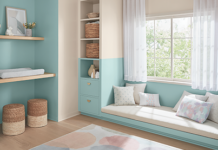Spending time in the great outdoors not only affords you the opportunity to stretch your legs, but it also helps with a good night’s sleep

Editor’s note: Savvy mattress retailers want to do everything they can to help their customers sleep better, including offering them sound advice and tips. Feel free to share this great guidance from Better Sleep Council spokeswoman Lissa Coffey with your shoppers (with credit given, of course). The BSC is the consumer-education arm of the International Sleep Products Association.
Where are you right now? Chances are you’re indoors under artificial light. That’s an easy guess because that’s where most of us spend much of our time these days. While we may be stuck inside for work and other responsibilities, we end up paying a price healthwise if we don’t get balance in our lives. Now science is confirming what we’ve long suspected to be true — fresh air and sunshine make a difference in how well we sleep. Across the board, we all need more “vitamin green.”
Let’s start with the effects of light. Exposure to fluorescent lights and other bright artificial lights, particularly at nighttime, causes us to be more alert, increasing what scientists call sleep onset latency, which is the amount of time it takes us to go from being fully awake to asleep. Our phones and other devices contribute to this because they emit blue light. A Harvard University study found that exposure to this blue light at night interferes with the body’s production of melatonin, the hormone necessary for aligning our internal clock with the rhythm of nature. Fortunately, many devices have a nighttime feature that gives screens a more yellow tone, reducing the negative effects of the blue light. But maybe we should take this information as a cue to get outside more often.
Spending time in nature has many benefits for our health, both mental and physical. Sunlight plays a big part in this. A recent study from the University of Colorado sent people on a weeklong summer camping trip. The intent was to look at how natural light, without any exposure to electronics, would change their body clocks. For comparison, scientists measured melatonin levels before and after the trip. It turns out that before the trip, the participants’ internal clocks were delayed two hours because of exposure to our modern environment. However, after just one week in nature, they were all able to reset their internal clocks.
Talking to the moon
So, what about that moonlight? Some say it’s more difficult to sleep during a full moon. Scientists at Switzerland’s University of Basel took a look at this. Over a three-year period, researchers concluded that sleep onset latency increased as the full moon approached. (Participants were classified as “good sleepers” and kept in a highly controlled environment.) And during a full moon, it took an average of five minutes longer to fall asleep. As the moon decreased, sleep latency also decreased. Further, the study revealed that melatonin levels dropped during the full moon nights and were at their lowest when the moon was completely full. In addition, people slept an average of 20 minutes less on the night of a full moon. Just like our circadian rhythm tends to synchronize with the sun, we have another body clock that seems to be tuned to the moon.
Whether we’re aware of it or not, we are literally a part of nature, and our bodies respond to nature’s changes. It’s more important than ever to stick with a good sleep routine during the nights surrounding the full moon. As the Chilean poet and diplomat Pablo Neruda said, “The moon lives in the lining of your skin.”
A breath of fresh air
In addition to spending time outdoors, another way to experience the benefits of nature is to bring the fresh air indoors with you as much as possible. NASA even conducted a study on this to see which plants could purify the air indoors to help facilitate a better quality of sleep. Here are just a few of the plants researchers suggest:
- Jasmine: Jasmine flowers have a sweet, distinctive fragrance, known for soothing and relaxing the mind and body and settling us into slumber. It’s a prolific plant that likes to climb or creep, and it grows quickly.
- Lavender: Lavender is perhaps the most well-known fragrance when it comes to sleep aids. It helps slow down the heart rate and lower blood pressure and stress levels. It’s gentle enough that you can use the aroma in a baby’s room. There are many lavender products on the market, but nothing beats the real thing. Lavender is easy to grow, and you can keep little pots of fresh lavender on your nightstand for maximum benefits.
- Gardenia: Gardenias are more delicate, but with a little TLC they make beautiful houseplants. They have glossy evergreen leaves and their flowers are wonderfully aromatic. Gardenia is another scent that is said to both relieve anxiety and promote sleep.
- Snake plant: Snake plant is easy to grow and maintain, making it ideal for indoors. In addition, it’s a superstar at improving air quality. During the night, a snake plant emits oxygen while taking in carbon dioxide. This leads to both better air and better sleep. Snake plant also acts as a filter for common household toxins in the air.
- Spider plant: Spider plant is a wonderful hanging plant as it has little offshoots that resemble spiders. NASA tests show the plant removed about 90% of formaldehyde from the air. Spider plant also absorbs odors and fumes, so it’s a great air cleanser.
- English ivy: This is another plant that is easy to grow, and it needs only moderate exposure to sunlight. English ivy is good for improving the symptoms of allergies and asthma, and we all know how much they can impact sleep. The American College of Allergy, Asthma and Immunology says English ivy can remove 78% of airborne mold in just 12 hours. Ivy is evergreen, and it looks good either hanging or placed on a shelf where the vines can trail down. If you have children or pets, keep English ivy out of their reach as the leaves can be toxic if eaten.
- Peace lily: Besides being elegant and beautiful, the peace lily helps reduce humidity in a room by as much as 5%. The benefit here is that lower humidity suppresses the airborne microbes that can lead to allergies. It also helps relieve the dry throat and nose that disturbs sleep. This is another plant to keep away from children and pets. It’s low maintenance; a weekly dose of water is all it needs.
- Bamboo palm: If you love a tropical vibe, the bamboo palm should fit right in with your décor. Another name for this plant is the reed palm, and it is amazing as an air purifier. When we breathe better, we sleep better. Give this plant indirect sunlight and keep the soil moist but not wet.
- Cut flowers: Cut flowers also give benefits of vitamin green, though they need to be replaced on a regular basis. Both gerbera daisies and chrysanthemums are great for the air, as well as a bright and colorful addition to your house to boost your mood.
 Nature is here to support us in all aspects of our health. If you’re having trouble sleeping, spend more time in nature and look at your daily habits and schedule. As the Jackson 5 sang, “Don’t blame it on the sunshine/Don’t blame it on the moonlight/Don’t blame it on the good times/Blame it on the boogie.”
Nature is here to support us in all aspects of our health. If you’re having trouble sleeping, spend more time in nature and look at your daily habits and schedule. As the Jackson 5 sang, “Don’t blame it on the sunshine/Don’t blame it on the moonlight/Don’t blame it on the good times/Blame it on the boogie.”
Lissa Coffey is a relationship expert, author of several books and broadcast journalist. A spokeswoman for the Better Sleep Council, she stars in several videos that offer sleep and mattress-shopping tips for consumers.




